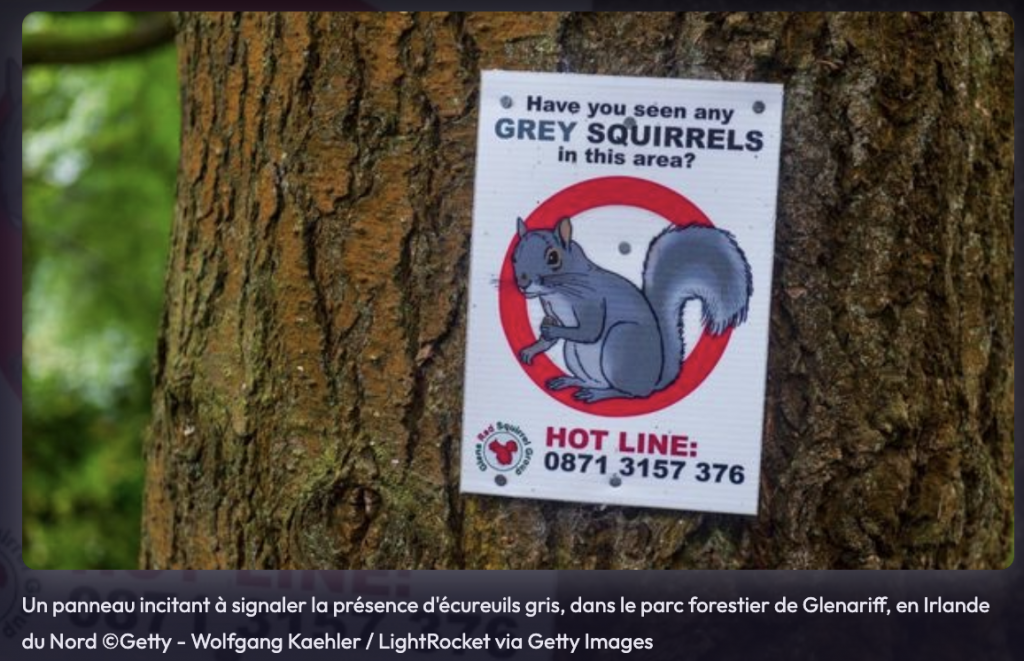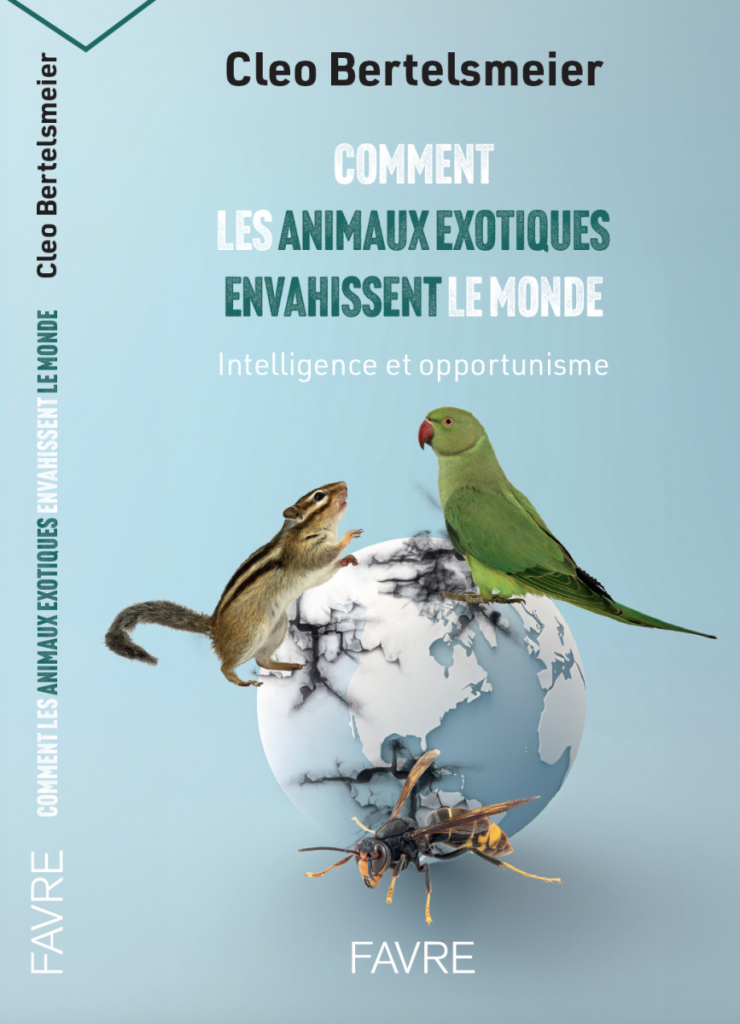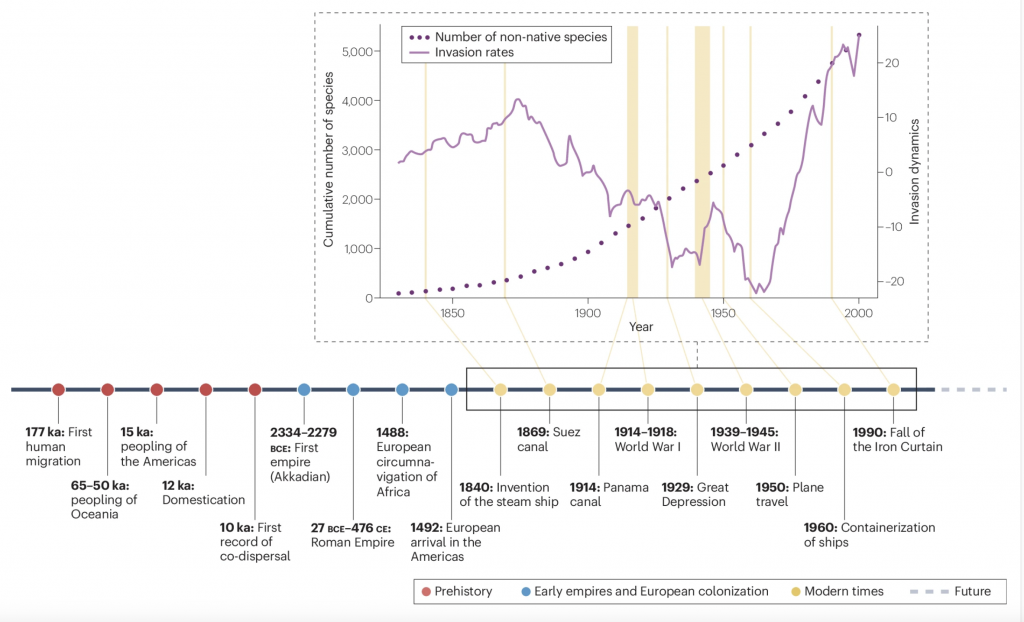Cleo has been invited by Mathieu Vidard in a show on invasive species, discussing among other things her new book.
Link here.

Cleo has been invited by Mathieu Vidard in a show on invasive species, discussing among other things her new book.
Link here.

Cleo was invited (21st of June 2025) on France Culture, discussing with Etienne Klein her new book on exotic animals.
Link here.

Cleo’s new popular science book on invasive animals is published! It’s about how globalization has contributed to spread animals worldwide, what makes a good invader (intelligence, beauty, sociality etc), how invaders succeed and about our relationship with invasive species.
It is available here:
Editions Favre, FNAC Suisse, Leclerc France, Amazon.fr, Orell Füssli … and of course in book shops.

Summary in French:
Ils font la une des journaux : moustiques tigres qui ne cessent de se propager et piquent à toute heure de la journée, frelons asiatiques qui tuent les abeilles domestiques, tamias vecteurs de la borréliose de Lyme et méduses venimeuses qui se répandent en Méditerranée. Fruits de la mondialisation, on compte maintenant des milliers d’animaux invasifs et leur nombre ne cesse d’augmenter. Pourquoi ces animaux prolifèrent autant, alors qu’ils ne le font pas dans leur aire d’origine ? Pourquoi certains créent plus de dégâts que d’autres ? Qui est susceptible de quitter sa patrie et tenter sa chance ailleurs ? Entre autres curiosités, la science a découvert que les individus les plus curieux, opportunistes, efficaces et agressifs sont les plus enclins à l’émigration ! D’autres se sont affranchis du sexe : sans recherche de partenaire, on peut envahir beaucoup plus rapidement ! On imagine souvent les fourmis de feu ou les perruches à collier toutes pareilles, mais ce n’est pas le cas et ce livre montre comment certaines caractéristiques personnelles sont favorisées pendant une invasion. Une fois arrivés dans une nouvelle aire, les animaux exotiques tirent bénéfice de leur grande capacité à s’adapter à la nouveauté. Les comportements insolites et les défenses physiques qu’apportent les animaux exotiques perturbent fortement les espèces autochtones qui se voient menacées par des prédateurs féroces, des herbivores affamés ou encore des parasites ingénieux ou des vecteurs de maladies. Peut-on prédire les invasions, les prévenir ? Ou bien faut-il s’habituer à cette explosion d’animaux exotiques ? Partons à la découverte d’un phénomène mondial, visible partout : dans nos jardins et nos lits, à la plage, en forêt ou au bord d’un lac, et dont les impacts sont économiques, sociétaux et sanitaires.
Olivia has just published another chapter of her PhD thesis. Congratulations! It is about the extent of niche shifts using micro- vs macroclimatic data. Link.
Introduced species can establish in climates outside of their native niche and undergo ‘niche shifts’. However, studies of niche shifts generally rely on above-ground climate data, neglecting the potential buffering effect of ground-level or soil climates.
Here, we investigated the impact of soil temperatures on niche shifts in 95 introduced ant species using both ordination and hypervolume-based approaches. We compared niche shifts using air temperature and soil temperature.
Overall, between 65.2% and 82% of species (depending on the metric) exhibited smaller niche shifts when considering soil temperature, with varying levels of correlation between air- and soil-temperature niche shifts across species (Correlation coefficient range: 0.56-0.73). Furthermore, air and soil climate conditions were generally more uncoupled than expected at random. This suggests that species use microrefugia and that this may explain the lower levels of niche shifts observed when using microclimatic conditions. Ecological traits, nesting type, forest cover and spatial spread did not consistently impact the differences across metrics in soil temperature buffering of niche shifts among species. This highlights the need for experimental microclimatic research to explore species differences in air- vs. ground-climatic niche shifts.
We overall highlight the importance of incorporating ecologically relevant microclimatic data, particularly for small, ground-dwelling organisms like ants. This study emphasises the ongoing need for a nuanced understanding of the intricate interplay between air and soil temperatures in the context of niche dynamics. Ultimately, soil-level datasets may improve habitat suitability models, leading to more accurate predictions of establishment success for introduced species.
We have published a review paper on ‘Temporal dynamics and global flows of insect invasions in an era of globalization’. This was a nice collaborative team effort with the participation of Aymeric, Tongyi, Rosaëlle and Sébastien in addition to Jeff (who is a professor from the University of of New Hampshire and did a sabbatical last year in our team) and Cleo (who lead the paper). Link to the paper.
Summary: Human-mediated transport has led to the establishment of more than 6,700 non-native insect species with wide-ranging effects on ecosystems, economies and human health. Understanding how different aspects of globalization affect the spread of non-native insects is crucial to reducing their effects. In this Review, we explore current and historical patterns, drivers and dynamics of global insect invasions facilitated by humans since prehistory. Multiple aspects of the history of globalization have influenced invasion dynamics, including the spread of agricultural practices in the Neolithic period, the advent of early empires and their trade routes, colonization, geopolitical events, wars and economic crises. Technological innovations such as steam ships, containerization and the internet have further accelerated global insect invasions. Spatial invasion patterns are characterized by frequent secondary spread via bridgehead populations, asymmetric intercontinental species flows originating disproportionally from Europe, and biotic homogenization of communities. Insect invasions are predicted to increase dramatically and their dynamics will shift, especially with the opening of trade routes and introduction pathways. Inspection at ports of entry and early detection systems are crucial to inform mitigation efforts. Future interdisciplinary collaborations will integrate knowledge from diverse and emerging data sources and technologies, advancing our understanding of insect invasion biology.
